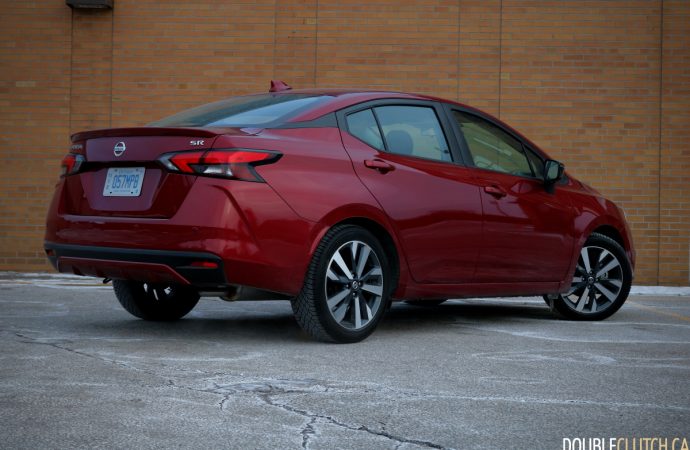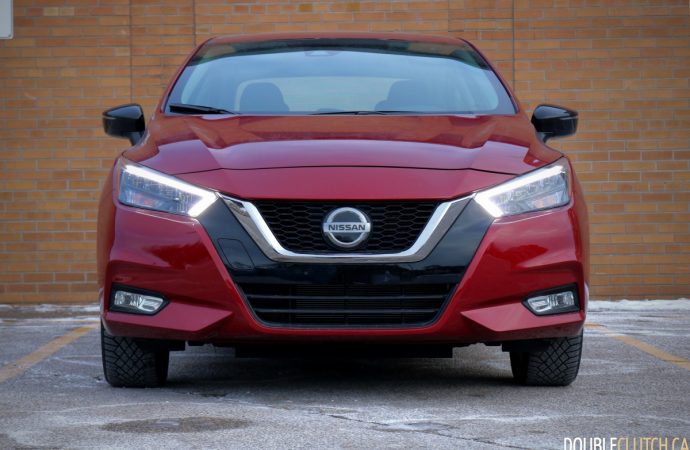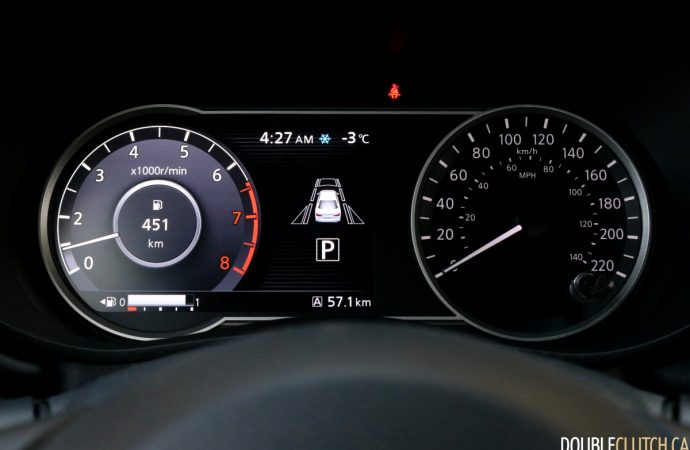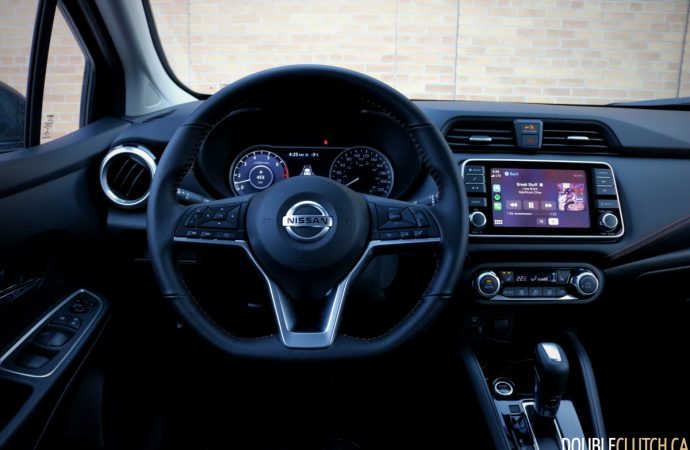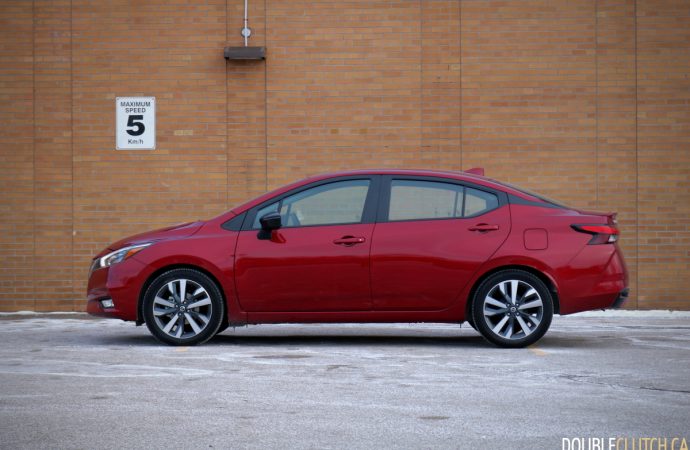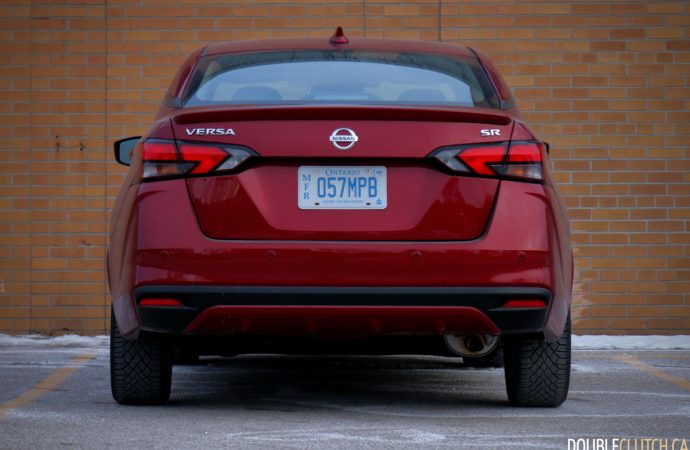When Nissan first launched the Versa back in 2007, it immediately made a name for itself as a lot of car for the money. It was bigger and more fully-featured than most subcompact cars yet it was very competitively priced. Now in its third generation, the 2021 Nissan Versa SR still offers a larger footprint, more room and a competitive feature set compared to other subcompact cars. The big question now is, will its new price put off many buyers?
Most cars aren’t investments, despite what decades of casual social discourse may have told you. Instead, they’re utilities just like electricity and broadband internet. Pay a certain amount every month and they’ll get you to work, along with any other places you may need to go. Given the woeful state of public transportation across most of this country, cars are often a necessary expense in order to keep living. Entry-level cars are really the extreme of this, optimized for low-cost and efficiency in order to keep the masses on their feet.
Looking at the 2021 Nissan Versa, it doesn’t seem all that small. In fact it’s almost as wide as the original Infiniti G35 sedan and less than a centimetre shorter than the Honda Civic was ten years ago. Subcompact may be a bit of a misnomer then, but as cars have rapidly grown in footprint, is anything truly small anymore? Thankfully, size is the Versa’s biggest visual strength as it doesn’t look like a subcompact car until closer inspection.
The overall silhouette is more bulbous than what compact cars have to offer, although Nissan has used some tricky elements like a floating c-pillar and squared-off bumpers to distract from the tall, cab-forward proportions. It looks more handsome than most subcompact sedans but still alludes to how the superior form for a subcompact car is actually a hatchback.
On the inside, the 2021 Nissan Versa is a reasonably nice place to be. The big design highlight on our SR tester is a swath of stitched faux-leather across the dashboard and it works to create a tactile surface on the dashboard. The rest of the interior is made of hard wearing plastic typical of the subcompact car segment, but it features a nice tight grain that’s still aesthetically-pleasing. The steering wheel is a small-diameter unit with a flat bottom that opens up legroom for the driver and intuitive button controls for audio, cruise control and moving through screens on the digital half of the gauge cluster.
It’s worth mentioning that Nissan didn’t exactly nail the front seat design on the new Versa. Sit bolt upright with your lower back against lumbar support and your head against the headrest and you’ll find that your upper back doesn’t even come close to contacting the seat. Unless you suffer from excessive lumbar lordosis, these seats won’t be comfortable for more than an hour at a time.
As for gadgets, the 2021 Nissan Versa comes fairly well equipped. Even the base S model comes with air conditioning, while SV and SR trims gain single-zone automatic climate control. Infotainment is provided on a seven-inch touchscreen, although Apple CarPlay and Android Auto aren’t available on the base S model. SV and SR models add a seven-inch colour screen in the gauge cluster for displaying drive information and altering vehicle settings while the top SR trim gains push button ignition and proximity-based keyless entry.
It’s all rather modern stuff for an entry-level vehicle, although there is some weirdness at play here. In addition to locking the base trim out of Apple CarPlay and Android Auto, only the top SR trim gets a six-speaker stereo and the base Versa S only gets a split folding rear seat with the CVT gearbox.
Powering the 2021 Nissan Versa is a 1.6-litre four-cylinder engine making 122 horsepower and 114 lb.-ft. of torque. Not big numbers, but the Versa only weighs as much as a medium-sized hamster so they don’t need to be. Acceleration around town is fine and while passing on the freeway requires both planning and commitment, it’s still very much feasible within reason. Standard equipment on the base S trim is a five-speed manual gearbox, while a continuously variable transmission is an option on base S trims and standard on both SV and SR trims.
Said continuously variable transmission is fine under most conditions but can swap ratios in a lurchy, uncouth manner when accelerating moderately from cold. Once driving style is adjusted to suit the CVT, the Versa behaves as smoothly as one would expect a modern car to. Fuel economy is decent but not outstanding. We averaged 7.7L/100km in a week of mixed driving which falls short of the government’s combined rating of 6.7L/100km.
One big draw of the 2021 Nissan Versa is a comprehensive suite of active driver assists and passive safety features. Automatic emergency braking both front and rear, lane-departure warning and automatic high beams come standard on all trims while SV and SR trims gain blind-spot monitoring, rear cross-traffic alert and driver alertness monitoring. While many inexpensive cars are filled with airbags, few come with such a substantial safety suite.
Freeway ride quality is remarkably good, only being slightly choppy over extremely poor surfaces. Granted, said choppiness is all relative. In the past, subcompact cars would behave like porpoises over rough sections of road due to cheap dampers and short wheelbases. The Versa only barely rocks over awful asphalt like a boat that’s just a hair too small for smooth sailing on open waters. An oddly fitting euphemism for such a relatively small car on our SUV-infested roadways.
As for handling, the steering is rather light and vague but it is quite quick. These traits work fantastically well together for navigating tight drive-thrus and parking lots but make freeway driving in high winds a chore. Overall, the Versa is an easy car to drive in urban environments, exactly what buyers really want.
Pricing for the 2021 Nissan Versa starts with the S trim level at $16,498, or $17,998 with a continuously variable gearbox. It may have air conditioning and automatic emergency braking, but it’s lacking two critical features for sales success: Apple CarPlay and Android Auto. Not good, and frankly a turn-off for most buyers. The SR trim we’re testing retails for $20,998, but other than LED lamps it doesn’t bring any game-changing features to the table.
It’s really just a smorgasbord of appearance items over a mid-range trim. Are entry-level car buyers really about orange stitching? As it turns out, probably not. That leaves the $19,498 mid-range SV model with its continuously variable transmission, automatic air conditioning, Apple CarPlay and Android Auto to be the volume leader. The problem here is that $19,498 is a lot of money for a subcompact car.
A Kia Forte LX with a continuously variable transmission is $19,298. Yes, that’s $200 less expensive than a Versa SV. While it gives up automatic climate control for simple air conditioning and doesn’t have quite as comprehensive an active safety suite as the Versa, it’s a bigger, more refined, slightly more mature car. In fact, you could buy a Forte LX, a medium three-topping pizza, a bottle of cheap Asti, a Tinder Gold subscription and a Netflix premium subscription and still have money left over.
What’s more, a Hyundai Elantra Essential with a continuously variable transmission is just $19,799, only $301 more than a mid-range Versa, and it offers everything the Forte LX does. For those who are intrigued by a bit of cannibalism, a Nissan Sentra S Plus is $20,798 and really does feel worth it over a Versa SV with its nicer ride quality, nicer interior materials, competitive feature bank and more powerful engine.
Really stretch the budget and $21,150 buys a Toyota Corolla L with a CVT. While that is $1,652 more than a Versa SV which is a lot in this price range, a Corolla feels very refined and has a reputation for legendary durability and resale value, making it one of the de facto car choices for what feels like the past one hundred and eleventy years.
The 2021 Nissan Versa SR is a good car but its unusual options mix and optimistic pricing make it just too expensive for its own good. Consumers will find that they can pick up a larger, more elegant, similarly-efficient, similarly-equipped car for similar money. Granted, the bulk of this can be solved with just some minor re-jigging of trim levels. Hey Nissan, if you’re listening, can you add Apple CarPlay and Android Auto to the base S trim for 2022?

